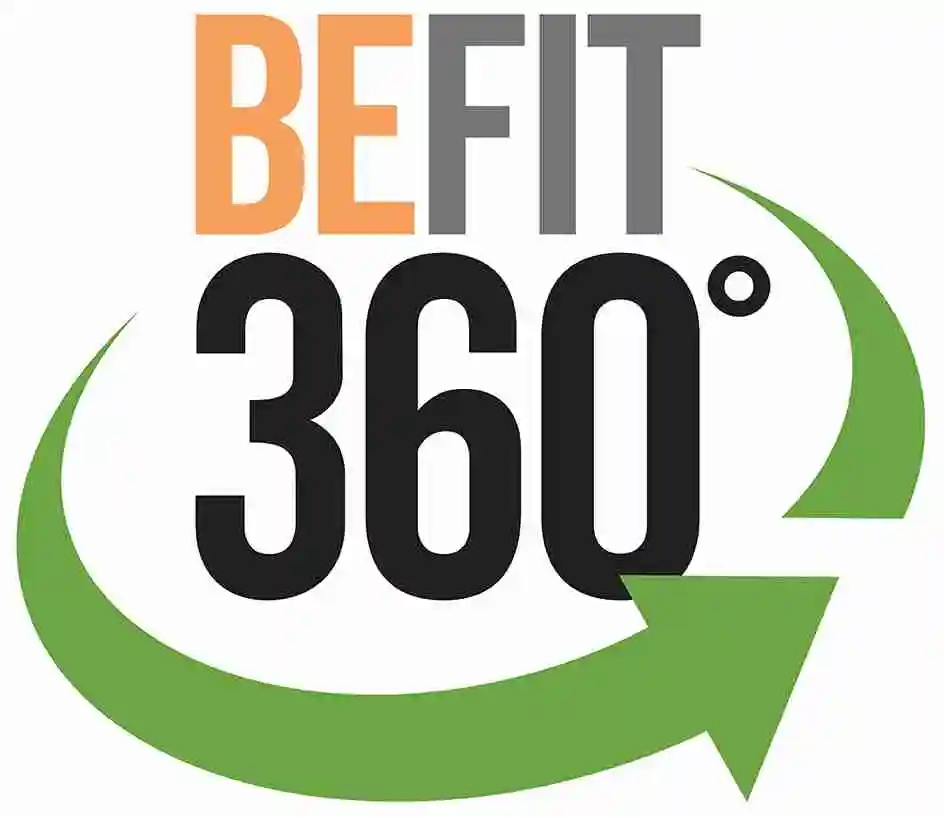
WHICH DIET IS BEST FOR YOU? A GUIDE TO KETO, CARNIVORE DIET, VEGAN, INTERMITTENT FASTING, AND MORE
Nutritionists weigh in on what the real benefits are of intermittent fasting, keto, the carnivore diet, and more.
Chances are you have a co-worker or lifting partner who praises his or her diet—keto this month, intermittent fasting next, maybe a dabble in something called the carnivore diet after that. But trying new diets other people swear by can be more exhausting than today’s battle ropes workout—so we’ve tapped a handful of nutritionists to weigh in on whether or not six of the trendiest diets right now are worth your time.
For this list, we’re doing a full breakdown of:
- Intermittent fasting
- Low-FODMAP diet
- Intuitive eating
- Carnivore diet
- Keto diet
- High-protein vegan diet
Read below for the pros and cons of each diet, and what type of athlete each one is designed for.
1 of 6

Intermittent Fasting
What it is: You restrict all your food to be eaten within a certain feed window, then you fast the rest of the time. Some types require whole-day fasts, but the most popular—and most doable for real life—is time-restricted feeding, where you fast for 16 to 20 hours, then eat whatever you want in a four- to eight-hour window.
What the research says: Intermittent Fasting (IF) will help you lose fat and maintain strength at least as well as counting calories, says a 2017 study analysis in JISSN. Another study in JAMA Internal Medicine found people who ate whatever they wanted, but every other day, lost 6 percent of their body weight over one year—about the same as those who restricted their daily calorie count.
Some studies suggest IF may actually work better than calorie tracking, like one 2016 paper in the Journal of Translational Medicines which reports fit folks who only ate within an eight-hour window lost more fat and maintained more muscle than those who ate the same number of calories over 12 hours instead.
Outside of body comp, studies show fasting for periods can improve your cholesterol and triglycerides, help control.
The pros: The only rule of intermittent fasting is you stop chewing when the clock strikes fasting time, so it’s really easy to follow. And because IF doesn’t ban any foods, it’s an easy way to cut calories without obsessing over everything you put in your mouth or feeling deprived.
“When you have less time to eat, you will eat fewer calories,” says DJ Blatner, RD, nutritionist for the Chicago CUBS and author of The Superfood Swap.
The best part of IF is you can make it work for any schedule, picking whichever hours to feed and fast that fit your life, she adds. (Psst: If a 16-hour fast freaks you out, start with 12 hours on, 12 off—a kind of IF light, suggests Blatner.)
The cons: Research shows almost no downsides to IF, but Blatner points out that the free-for-all feed window can be a green light for unhealthy choices.
“Food isn’t just about calories and weight. It’s also about quality of nutrients to protect us against disease and, for guys who are working out, to help with muscle repair and recovery,” she explains.
If you can keep your nutrients up and the junk down, the biggest drawback is really just irritability for the first couple of days or mornings you’re fasting—but that’ll go away as your body gets used to the schedule.
Who it’s best for: IF is a great option for any guy who wants to shed fat, regardless of their training methodology, Blatner says. The one group it’s not right for: Guys trying to bulk up since they need more calories, more often.
2 of 6

Low-FODMAP Diet
What it is: The low-FODMAP diet eliminates the difficult-to-digest carbohydrate molecules that make up the acronym (Fermentable Oligosaccharides, Disaccharides, Monosaccharides, and Polyols) and commonly cause digestive issues like gas, bloating, diarrhea, and constipation. The diet involves an elimination phase of foods like apples, wheat, honey, onions, and garlic, and then a reintroduction period where you slowly test which foods your body reacts negatively to. You then keep the offenders out of your diet long term to avoid GI distress.
What the research says: It helps reduce GI distress in people who have issues with bloating, cramping, and diarrhea/constipation but aren’t actually gluten sensitive, confirms a recent study in Gastroenterology Research and Practice. A small study earlier this year out of Australia found endurance runners had less flatulence and loose stool when they avoided FODMAPs for just six days, compared to a diet high in the hard-to-digest carbs. And in a survey of over 900 athletes, published in Applied Physiology, Nutrition, and Metabolism, 83 percent of people who eliminated at least one high-FODMAP food saw their GI symptoms improve.
The pros: Issues like diarrhea, bloating, and gas can be a big problem with athletes, in particular runners, and, aside from being uncomfortable, these can also get in the way of performance, explains gut health nutritionist, Danielle Capalino, RD, author of the forthcoming Healthy Gut, Flat Stomach: Drinks. A low-FODMAP diet can help reduce symptoms, allowing you to perform optimally and improve the appearance of a belly distended from gas.
The cons: The biggest risk of a low-FODMAP diet is not getting enough nutrients and exacerbating disordered eating, says an Australian analysis. A lot of fueling favorites are high in FODMAPs, like apples, mangoes, asparagus, brussels sprouts, and cauliflower—but there are plenty low in the molecules, too, Capalino points out. You just have to incorporate more low-FODMAP produce, like bananas, blueberries, oranges, potatoes, and carrots, while eliminating the high ones.
The other biggest downside is avoiding the carbs makes cooking and eating out more complicated. One potential fix: A recent study in Gastroenterology found a low-FODMAP diet works about as well as regularly taking a prebiotic, so if you’re not ready to give up your favorite foods just yet, you can try four weeks of a daily prebiotic first.
Who it’s best for: Endurance athletes. A study in Alimentary Pharmacology & Therapeutics too much exercise can cause acute chronic gi issues reports long bouts of exercise actually compromise gut integrity—specifically, working at 60 percent of VO2Max for at least two hours can cause the gut to become more leaky and GI symptoms to develop or worsen. This happens in roughly 20 to 96 percent exercise related gastrointestinal disorders of athletes, and avoiding FODMAPs can help offset the damage.
3 of 6

Intuitive Eating
What it is: Followers of intuitive eating ditch traditional diets and instead become in tune with their body’s signals, recognizing feelings of hunger and desires, listening to what their body wants to eat while keeping in mind basic nutrition tenants like getting enough protein.
What the research says: A recent paper in Frontiers in Psychology reports that mindful eating may help rewire our brain to break out of the negative reinforcement, reward-based system of eating that traditional diets have conditioned us to. Great news for guys who train for a sport where performance depends on weight class, leanness, or body aesthetics, 28 percent of whom have some form of disordered eating—especially novice bodybuilders.
Plus, mindful eating may help reduce depressive symptoms and teach you how to eat for physical rather than emotional reasons, according to a 2018 study in Appetite.
The pros: There’s no calorie counting, no banned foods, and a lot less obsessing. “Counting calories, macros, or points is not only exhausting but can be tedious. Listening to your body is more realistic,” says Lisa R Young, PhD, RDN, author of the forthcoming Finally Full, Finally Slim: 30 Days to Permanent Weight Loss One Portion at a Time.
Even though it sounds counterintuitive, you’ll probably experience fewer cravings and less binging. “When you start listening to your internal cues, you won’t just eat everything in sight because you’re paying attention to what your body craves—and it’s probably not actually a box of cookies,” Young says.
You do have to make sure you’re eating protein with every meal to maintain muscle, but a lot of people who turn to intuitive eating are coming off counting macros or another diet that centers around consuming enough protein, so that’ll likely already be second nature.
The cons: Intuitive eating takes time to learn—and that learning curve may involve some initial weight gain. And the diet only works if you really take the time to listen to what your body needs—if you don’t have the patience to recognize your internal signals, the plan’s not going to work, Young says.
Intuitive eating may not be a good idea for bodybuilders or competitive endurance athletes in-season, when they need to be hitting specific macro goals to build bulk, shed fat, or fuel miles, she adds.
Who it’s best for: Guys who are exhausted by the rigidity of counting macros and following a plan to the tee—the man who has failed with traditional diets and is ready to let go of the reins, regain his sanity, and be at peace with where his body is going to go based on what his hunger cues and healthy cravings are telling him.
4 of 6

The Carnivore Diet
What it is: You only eat foods that come from animals. To some, it’s kosher to include eggs and dairy, but the main goal is to get your carbcount as close to zero as possible, so die-hards stick strictly to the carb-free animal parts: meat, meat, and only meat.
What the research says: There is zero reliable research on an all-meat diet in humans.
The pros: Proponents of the diet like to say carbohydrates are toxic and the cause of fat gain, which is definitely not true. But you are at least cutting out unhealthy carbohydrates like donuts, sugary beverages, cookies, and candy, says registered dietitian and exercise physiologist Jim White, owner of Jim White Fitness and Nutrition Studios in Virginia Beach. And, if done right, this eating plan can lead to short-term weight loss and body fat loss, while the copious amounts of protein will help support muscle growth.
The cons: By now, we all know cutting an entire macronutrient out or eating just one form of food are two hallmarks of a bad fad diet. With the carnivore diet, you may lose weight quickly, but the diet is difficult to stick to long term—and, considering you’re not eating a single fruit or vegetable, doing so would cause major nutrient deficiencies and increase your risk for diseases, White points out.
Plus, while you’re limiting harmful processed foods, this much meat puts you well over the recommended saturated fat intake, raising your cholesterol and increasing your risk of heart disease and stroke—already two of the top five killers of men in the country.
Who it’s best for: No one.
5 of 6

The Ketogenic Diet
What it is: Our body traditionally uses glucose to fuel both our muscles and our brain. When you cut your carb intake to less than 10 percent of your total calories (less than 5 percent for die-hards), the glucose deprivation forces your body to instead use fat as fuel in your workouts, and forces your brain to release ketones, a unique backup brain food that has side effects like stopping epilepsy and unbelievable mental clarity.
What the research says: In the short term, the keto diet is pretty safe and effective. Research on overweight folks has found cutting carbs and increasing fat consumption can shed excess weight, improve insulin resistance, reduce blood pressure, improve cholesterol levels, and maybe even offset type 2 diabetes risk. And it’s probably an improvement over how most Americans eat: A 2017 study in Diabetes & Metabolic Syndrome reports that for overweight and obese people, going keto and not exercising may be a healthier option, metabolically and aesthetically, than eating the standard American diet and working out three to five days a week.
But it might not be superior to other healthy diets. When overweight or obese men spent four weeks eating either keto or a healthy, high-carb diet, they burned more calories on a daily basis without the macro—but it actually took them a full month to lose the same amount of body fat on a keto diet as they lost in two weeks on the high-carb diet, according to the results published in the American Journal of Clinical Nutrition And when it comes to healthy dudes, most research shows keto is just as effective as any other diet at reducing fat, but it compromises anaerobic, aerobic, and strength performance when you’re relying on fat as fuel rather than carbs.
And science doesn’t support eating this way long term: A recent study in The Lancet suggests limiting your carb intake in the long term can shorten your lifespan, probably because you’re cutting your fruit and vegetable intake, while another large study caution against cutting down on carbohydrates caution against cutting down on carbohydrates presented at the 2018 European Society of Cardiology Congress found people on the lowest-carb diets were the most likely to die from cancer, cardiovascular disease, and all other causes.
The pros: In the short term, going keto can help you get lean while retaining muscle and, because you’re consuming so much fat, you won’t be as hungry as you might be if you were restricting calories, says White. Plus, you’re cutting unhealthy carbs like donuts and pastries and you’re getting more nutrients than the carnivore diet since you’re eating at least some fruits and vegetables.
The Cons: You’ve got to count your calories, since fat has more than double the calories of protein or carbohydrates, gram for gram. And you might be more constipated and bloated—less plants means less fiber, which is crucial to support digestive function. This is compounded by high intake of hard-to-digest protein intake, White says.
The real risk, though, comes from where your fat sources come from. Since most plants are high in carbs, you’ll likely end up eating a lot of animal products which are high in saturated fat and bad cholesterol, increasing your risk of heart disease, White points out. But as keto becomes more popular, so do variations that might help offset the risks of the higher disease in the long term, like the keto-mediet which has you replace red meat and dairy with healthier, medium-chain fatty acids in coconut oil or the newly released ketotarian diet, which is all about marrying keto with vegetarianism.
Who it’s best for: In the short term, it may be an effective and safe options for cutting, when you want to decrease fat without losing lean mass—but it’ll work against you when you’re trying to bulk. And for most athletes—especially endurance athletes—the body comp payoff of keto isn’t enough to justify how a low-carb plan will compromise your performance, White says.
6 of 6

High-Protein Vegan Diet
What it is: You only eat plant-based foods, avoiding all animal product while also tracking how much protein you’re getting to make sure you’re facilitating anabolic growth.
What the research says: Some studies suggest vegetarians and vegans have poorer health, but the majority of research reports becoming a vegetarian folks who avoid meat have a lower risk of heart disease, cancer, type 2 diabetes, and have a longer life span. This may be even more true when comparing veganism against most current fad diets: A recent, large study in The Lancet found people who cut carbs and upped their animal intake had a higher mortality rate than folks who eat more plant-based foods.
And despite the bad rap of plant protein, 2017 research in theAmerican Journal of Clinical Nutrition reports that as long as men and women were getting at least the recommended daily allowance of protein (that’s 0.8 g/kg of body weight), carnivores and omnivores had roughly the same muscle mass and strength.
Meanwhile, research in Nutrients found among endurance athletes, fueling with plants or animals landed athletes with pretty much the same body composition and quality of physical performance, with carnivores clocking slightly more visceral, belly fat and omnivores logging a slightly better VO2max and comparable strength.
The pros: “Plant protein when eaten straight from the source comes packed with fiber and phytochemical—two of the most influential compounds for long-term health,” says Matt Ruscigno, RD, co-author of No Meat Athlete. Looking at the research, it’s clear those who eat more fruits, vegetables, whole grains, and legumes have lower rates of every major chronic disease. “Optimal nutrition for athletes is about more than performance; it also includes long term health,” Ruscigno adds.
The Cons: “It’s crucial for athletes to consume enough protein to maintain muscle turnover,” says Ruscigno. Some studies suggest vegans may need to eat more of the macro to achieve the same results they’d get from the animal variety like whey, but Ruscigno adds that, aside from strength athletes, a lot of guys underestimate their protein consumption.
The main worry isn’t in getting enough protein, but instead scoring it with within your daily calorie count, says sports nutritionist Jeff Rothschild, RD. Since most vegan sources of the macro are also higher in calories, it can be hard to be a calorie-restricted vegan without relying heavily on a lot of supplemental protein powders, he points out. Since powders are more likely to accumulate toxic metals like arsenic, mercury, and pesticides, you want to stay within just one scoop a day. (Rothschild suggests checking the Clean Label Project before you buy your plant protein.)
And you’ll have to take other supplements —a study by Mayo Clinic physicians found vegans are most often deficient in vitamin B12, iron, calcium, vitamin D, protein, and omega-3 fatty acids. In addition to B12, iron, and an EPA/DHA, vegans should add creatine and β-alanine supplementation to their routine, suggests a 2017 review in the Journal of the International Society of Sports Nutrition.
Who it’s best for: Pretty much every athlete who wants to cut his meat intake back will fare well on a high-protein vegan diet, but it’s an especially great option for guys with a family history of heart disease—forgoing meat can reduce your risk for ischemic heart disease by 32 percent.
Published on Muscle and Fitness
Author






